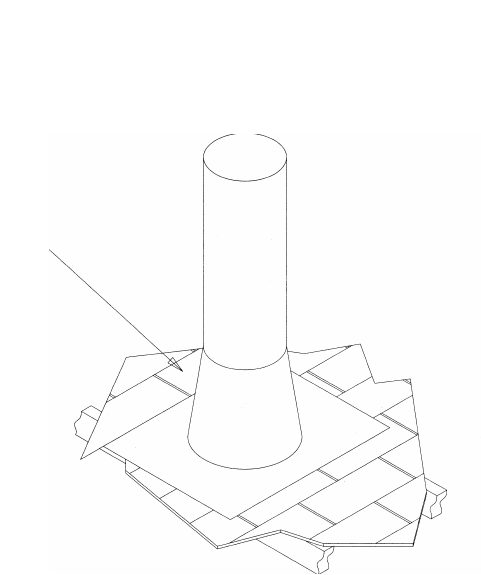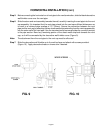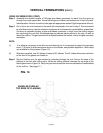
Page 23
VERTICAL TERMINATIONS (CONT.)
USING GS SERIES PIPE (CONT.)
Step 4. Assemble the desired lengths of GS pipe and elbows necessary to reach from the stove up
through the round support box. Insure that all pipe and elbow connections are in their fully twist-
locked position. Be sure to seal the outer pipe with appropriate sealant (high temperature silicone).
Step 5. Cut a hole in the roof centered on the small drill hole placed in the roof in step 2. The hole should
be of sufficient size to meet the minimum requirements for clearance to combustibles, as specified.
Continue to assemble lengths of pipe and elbows necessary to reach from the ceiling support
box up through the roof line. Galvanized pipe and elbows may be utilized in the attic, as well as
above the roofline. The galvanized finish is desirable above the roofline, due to its higher corrosion
resistance.
NOTE:
(1) If an offset is necessary in the attic to avoid obstructions, it is important to support the vent pipe
every 3’ (914mm) to avoid excessive stress on the elbows, and possible separation. Wall straps
are available for this purpose (Figure 12).
(2) Whenever possible, use 45° elbows, instead of 90° elbows. The 45° elbow offers less restriction
to the flow of flue gases and intake air.
Step 6. Slip the flashing over the pipe section(s) protruding through the roof. Secure the base of the
flashing to the roof with roofing nails. Insure the roofing material overlaps the top edge of the
flashing as shown in Figure 14. Verify that you have at least the minimum clearance to combustibles
at the roofline. (See page 17.)
FIG. 14
SHINGLES OVERLAP
TOP EDGE OF FLASHING


















